Research Area B
Publications 2011
16-Dec-2011
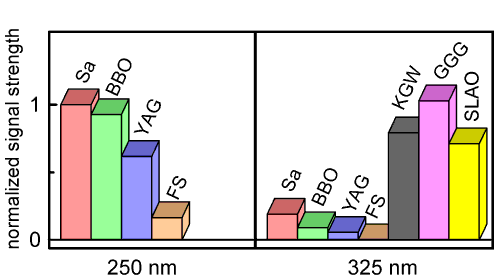
The beam attenuation by two-photon absorption in thin crystals and glass plates is utilized for directly measuring the intensity autocorrelation of UV femtosecond pulses without the need for an auxiliary pulse. We give a full description of the newly developed setup for operation from the blue down to the deep UV. The conditions that must be met to achieve ... READ MORE
06-Oct-2011

The kinetics of the reactions of the trans-beta-nitrostyrenes 1a–f with the acceptor-substituted carbanions 2a–h have been determined in dimethyl sulfoxide solution at 20 Grad Celsius. The resulting second-order rate constants were employed to determine the electrophile-specific reactivity parameters E of the trans-beta-nitrostyrenes according to the ... READ MORE
06-Oct-2011
Novel composites of highly ordered and stable biphenyl-bridged periodic mesoporous organosilica (PMO) materials confined within the pores of anodic alumina membranes (AAM) were successfully synthesized by evaporation-induced self-assembly (EISA). 4,40-Bis(triethoxysilyl)biphenyl (BTEBP) was used as a precursor in combination with the ionic surfactant ... READ MORE
26-Sep-2011
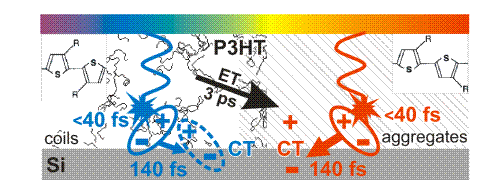
Despite the central role of light absorption and the subsequent generation of free charge carriers in organic and hybrid organic–inorganic photovoltaics, the precise process of this initial photoconversion is still debated. We employ a novel broadband (UV–Vis–NIR) transient absorption spectroscopy setup to probe charge generation and recombination in the ... READ MORE
13-Sep-2011
In this review we summarize the most important procedures for the preparation of functionalized organzinc and organomagnesium reagents. In addition, new methods for the preparation of polyfunctional aryl- and heteroaryl zinc- and magnesium compounds, as well as new Pd-catalyzed cross-coupling reactions, are reported herein. Experimental details are given for the most ... READ MORE
30-Aug-2011
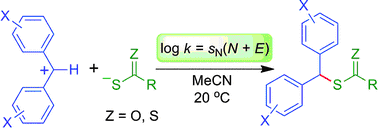
The kinetics of the reactions of thiocarboxylate and thiocarbonate anions with benzhydrylium ions have been determined in acetonitrile solution using laser-flash photolytic techniques. The second-order rate constants (k) correlate linearly with the electrophilicity parameters E of the benzhydrylium ions, as required by the correlation log k (20 Grad Celsius) = ... READ MORE
19-Aug-2011
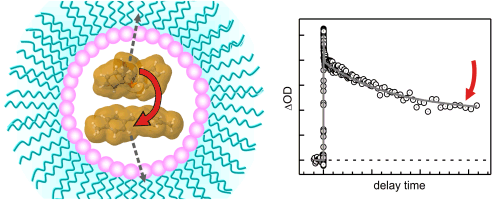
We investigate the effects of encapsulation on the dynamics after photoinduced bond cleavage of a diphenylmethyl phosphonium salt in acetonitrile reverse micellar nanopools by femtosecond UV/Vis transient absorption. The small volume of the nanopool is just large enough to accommodate one precursor molecule and therefore eliminates the effects of diffusion present ... READ MORE
19-Aug-2011
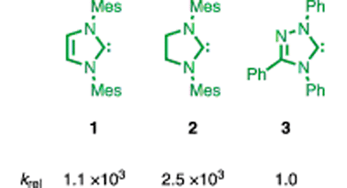
Unique organocatalysts: Arduengo's carbenes 1 and 2 are 103 times more nucleophilic than the Enders carbene 3, which attacks electrophiles with similar rates as diazabicyclo[5.4.0]undecene (DBU) and 4-(dimethylamino)pyridine (DMAP). The unique organocatalytic activities of ... READ MORE
10-Aug-2011
Colloidal mesoporous silica (CMS) nanoparticles with a thin titania-enriched outer shell showing a spatially resolved functionality were synthesized by a delayed co-condensation approach. The titania-shell can serve as a selective nucleation site for the growth of nanocrystalline anatase clusters. These fully inorganic pure silica-core titania-enriched shell ... READ MORE
18-Jul-2011
Free to go: A pH-labile immobilization of the melittin peptide with acetal linkers in the pore system of a SBA-15 host allows release of the peptide upon decrease of the pH value from 7.4 to 5.5. Such a release is shown by melittin-induced lysis of mouse erythrocytes. The method could be used to prepare new silica-based peptide delivery systems for targeted cancer ... READ MORE
05-May-2011
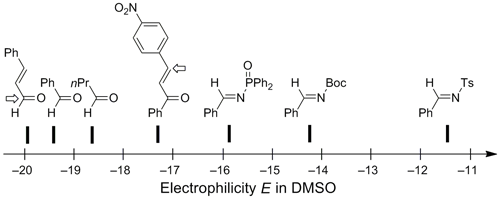
The rates of the epoxidation reactions of aldehydes, of the aziridination reactions of aldimines, and of the cyclopropanation reactions of α,β-unsaturated ketones with aryl-stabilized dimethylsulfonium ylides have been determined photometrically in dimethyl sulfoxide (DMSO). All of these sulfur ylide-mediated cyclization reactions as well as the addition ... READ MORE
11-Apr-2011
We report on a novel high temperature liquid phase “calcination” method with trioctylphosphine oxide (TOPO), tri-n-octylamine (TOA), and squalene for removing the template and strengthening the silica network in colloidal mesoporous silica (CMS) nanoparticles. For such materials, the common calcination procedure in air would result in strong agglomeration, thus ... READ MORE
09-Mar-2011
A highly diastereoselective methodology for the preparation of various substituted piperidines via Negishi cross-couplings with (hetero)aryl iodides was developed. Depending on the position of the C-Zn bond relative to the nitrogen (position 2 vs position 4), the stereoselectivity of the coupling can be directed toward either the trans- or cis-2,4-disubstituted ... READ MORE
07-Mar-2011
Readily available 1,1-dichloro- 2-alkynes are versatile starting materials for the synthesis of polyfunctionalized allenes. They can be prepared from commercially available terminal alkynes in a two-step procedure. The Cu-mediated reaction of several 1,1-propargylic derivatives with functionalized alkyl, benzylic, or allylic zinc reagents proceeds exclusively with ... READ MORE
28-Feb-2011
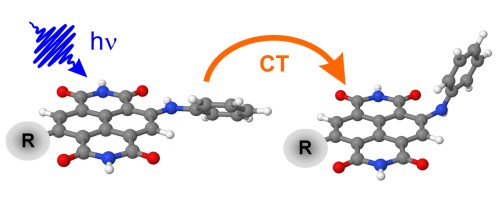
We study the charge separation and recombination of two arylamino core-substituted naph-thalene diimides by transient absorption. Both compounds show a 3 ps relaxation from the initially excited partial to the full charge transfer state. Quantum chemical calculations show that this process is associated with a twisting of the arylamino substituent. In the twisted ... READ MORE
18-Feb-2011
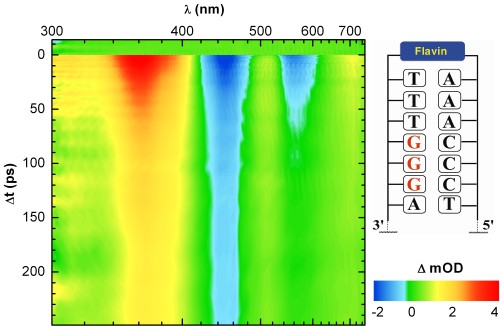
Quantum yields of up to 14 % for the formation of a long-lived, charge-separated state can be achieved in flavin-capped DNA hairpins. The excited flavin state is quenched by electron-transfer processes from adjacent DNA bases. The introduction of multiple (dG:dC) base pairs leads to efficient hole trapping that competes with the charge recombination through ... READ MORE
19-Jan-2011
Starting from an appropriate 6-chloro-2-TMS-purine derivative, a regioselective functionalization of the purine scaffold was achieved successively at positions 8, 6, and 2 via zinc and magnesium intermediates which were generated either by a direct zincation with TMPZnCl 3 LiCl or by an I/Mg exchange with iPrMgCl. ... READ MORE
02-Aug-2010
Functionalized heterocyclic zinc reagents are easily aminated by an oxidative amination reaction of zinc amidocuprates prepared from various lithium amides. For the oxidation step, PhI(OAc)2 proved to be the best reagent. The required heterocyclic zinc organometallics can be prepared either by direct metalation, by magnesium insertion in the presence of ZnCl2, or by ... READ MORE

Rate and equilibrium constants for the reactions of a series of isothioureas with benzhydrylium ions have been measured photometrically. The data were employed to determine the nucleophilicities and nucleofugalities of isothioureas and compare them with those of other organocatalysts.
... READ MORE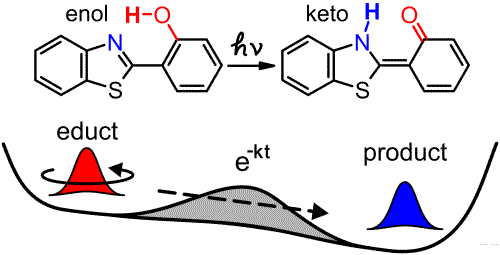
We investigate the reaction kinetics of ultrafast excited state intramolecular proton transfer (ESIPT) and discuss the possible origins of the process: Tunneling of the reactive proton, vibrationally enhanced tunneling, and multidimensional wave packet dynamics of the entire system. Comparison of the measured kinetics for the protonated and the deuterated form of ... READ MORE
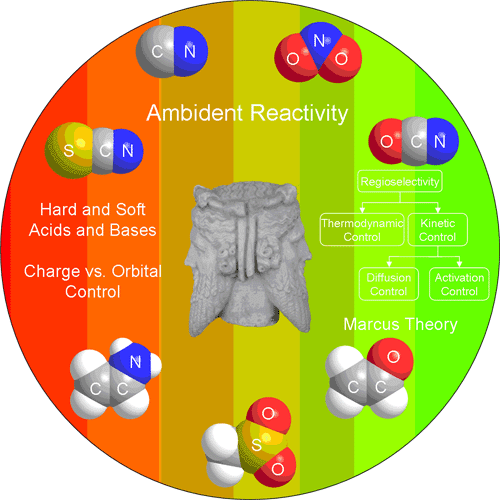
The concept of Hard and Soft Acids and Bases (HSAB) proved to be useful for rationalizing stability constants of metal complexes. Its application to organic reactions, particularly ambident reactivity, has led to exotic blossoms, however. By attempting to rationalize all observed regioselectivities by favorable soft-soft and hard-hard as well as unfavorable ... READ MORE
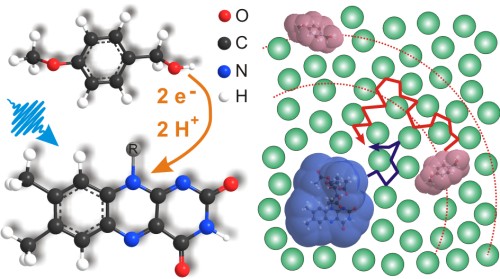
Flavin-mediated photooxidations have been described for applications in synthetic organic chemistry for some time and are claimed to be a route to the use of solar energy. We present a detailed investigation of the involved photophysical and photochemical steps in methoxybenzyl alcohol oxidation on a timescale ranging from sub-picoseconds to tens of microseconds. ... READ MORE


